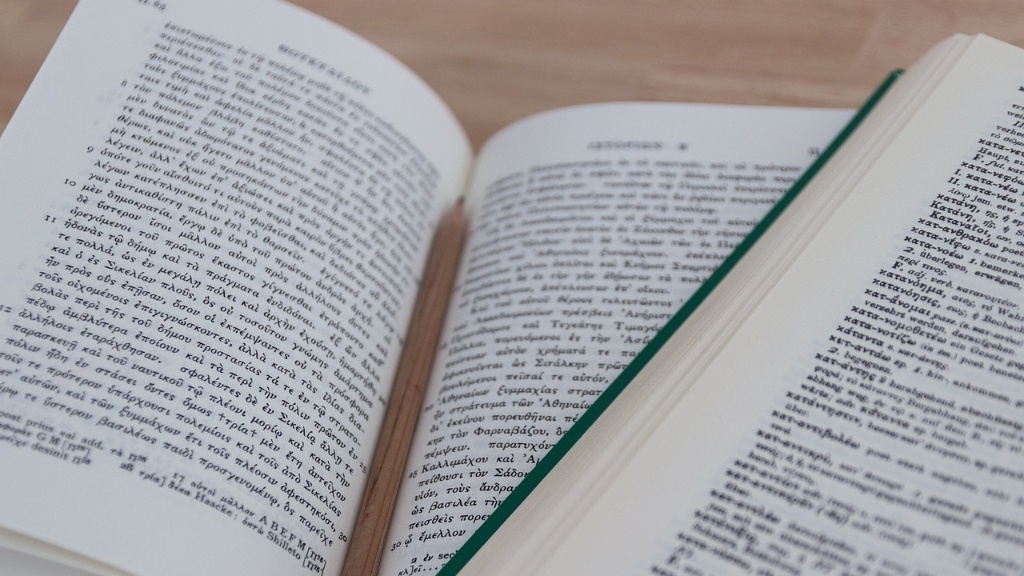What is Metonymy in Poetry?
Metonymy is a type of figurative language used in poetry that references one thing to represent another. It is common in poetic circles to use this type of figurative language to evoke deeper feelings, emotions, and understanding. It is a creative technique that challenges the reader to think outside the box and to look beyond the literal meaning of the words on the page. Metonymy broadens the language of poetry which allows it to reach a broader audience.
Metonymy is an easy form of figurative language to identify. When writing in metonymy, the poet is attempting to connect two related ideas. For example, when someone refers to “The White House” they are not referring to a physical house, but are instead referring to the government. Utilizing metonymy in a poem can help the speaker establish a link between things or ideas that don’t normally go together–which often delivers unexpected and unique insights.
In order to utilize metonymy in a poem, the writer must consider the greater context and use words that “stand in” for the intended idea. In other words, the poem must be written in such a way that the meaning of the metonymy is understood. Poets must also consider the effect of the metonymic references on the larger meaning of the poem, as the metonymy can help support or drive other ideas.
Additionally, metonymy is valuable in that it can be used to create a vivid image. By using metonymy, the poet can create sensory experience which helps the reader to visualize a particular image in the mind’s eye. This can help to bring the poem alive and can bring greater clarity to its overall meaning. It is a way for the poet to show instead of tell, allowing the reader to take the journey with them.
Metonymy can be an effective way to add a new dimension to poetry by creating a unique perspective and allowing for a deeper understanding of the poem’s message. Utilizing special symbols and relate them to other symbols and draw out the insight and emotion can create an overall atmosphere that helps to bring the words to life. Metonymy can be as poetic and powerful of a tool as any other form of figurative language.
Metonymy in Popular Music
Metonymy is often used in popular music to make a deeper connection between the lyrics and the overall theme. By using metonymy the writer can create a memorable image that is simultaneously familiar in its original context and iconic in its own right. Famous examples of metonymy in popular music can be seen in John Lennon’s song “Imagine” and Bob Marley’s song “Redemption Song.” In these songs, the artist references concepts as symbols and images. This can help to create a deeper connection between the lyrics and the greater meaning of the song.
Metonymy can also be helpful in making a song more accessible or understandable. When a song references something familiar, it reinforces the theme and gives the listener context to connect with. This can be used to create a catchy melody or to draw attention to a particular point. Additionally, metonymy can be used to make a political or societal statement by referencing something that has strong implications and meanings attached to it.
For example, the artist Common Sense uses metonymy to deliver his message in the song “Testify.” In this song, he references the walls of Jericho to show the struggle and brokenness of the city. The way he uses the walls of Jericho helps to give power to the idea of the struggle, and it draws out the emotion of it as well.
By utilizing metonymy in this way, it is easier for the listener to connect with the message and to gain insight into the overall theme of the song. In this way, metonymy can be an effective tool to use when writing in any genre of music.
Metonymy in Film and TV
Metonymy is often utilized in film and television in order to create a connection between the story and the deeper themes. For example, the movie “The Shawshank Redemption” uses metonymy to represent the idea of hope. In this film, the character Andy is constantly challenging the system to find a way out. The symbol of the crow, which is used to represent freedom and hope, helps to re-enforce this theme.
By using metonymy in this way, the filmmakers are able to create a deeper connection between the story and the audience. The use of symbols helps to evoke a certain emotion, which enhances the overall theme of the movie. Metonymy can be used in any genre of film, as well as in television, to help draw out a particular emotion or idea.
Additionally, metonymy can be used to create a more vivid image. By using symbols and other references to illustrate a certain situation, the viewer or reader is able to connect more with the overall story. The use of metonymy in this way can help to create a better overall viewing experience.
Metonymy in Literature
Metonymy is used frequently in literature to add a sense of depth and meaning to the written word. This type of figurative language can be used to comment on the characters, the plot, and even the themes. For example, the novel “The Great Gatsby” uses metonymy to comment on the idea of hopelessness and despair. By referencing the green light at the end of the dock, the author is making a statement about hope and the illusion of it.
Additionally, the use of metonymy can help to create a certain atmosphere or environment in a story. By using symbols and references, the author can create a mood that helps to drive the narrative. By referring to a certain scene or idea, the author can evoke a certain emotion from the reader, which reinforces the overall theme.
Metonymy is an important figurative language to understand, as it can be used for a variety of purposes. By understanding how to use and identify metonymy, one can gain a better understanding of poetry, music, film, and literature. It is a powerful tool that can help to take the written word to the next level.
The Power of Metonymy
Metonymy can have a powerful and lasting effect when used correctly. It can help to illustrate a greater message or theme, in just a few simple words. Additionally, its use can help to evoke emotions and create a vivid image in the reader’s mind. Metonymy is an extremely effective way to communicate, and its power should not be underestimated.
In addition to this, metonymy can be used to create links between things that would not normally go together. This can help to make connections between different ideas, and can be used to challenge the reader to think outside the box. It is a valuable tool in any kind of writing, and can be used to take the piece to the next level.
Metonymy is also helpful in that it can add a certain depth and insight to a piece. By referring to things in a new or unique way, the writer can help to draw out emotions and to better understand the overall message of the piece. This can help the reader to connect with the work and gain insight into the author’s message.
Overall, metonymy is a powerful tool that can help to take a piece of writing to the next level. By utilizing this type of figurative language, the writer can create a deep and emotional connection between the written word and the reader. It is a valuable asset to any poet, songwriter, novelist, or filmmaker.
Metonymy and Imagery
Metonymy can be used to create imagery, which can add a certain level of power to the written word. By using symbols and references, the writer can evoke emotions and feelings without actually having to spell out what they are. For example, the symbol of an eagle can represent freedom and power. Therefore, by using metonymy in this way, the writer can create an intricate image that delivers meaning and understanding.
Additionally, imagery can be used to deepen the analysis of the poem or story. By using specific symbols and references, the writer can delve into the deeper meaning of the work. This can help to bring the written word to life and can make the work more powerful and evocative.
Metonymy can also help to create a sensation of foreboding or excitement. By referring to certain symbols, the writer can make the reader feel that something is about to happen. This can create a sense of anticipation, which can be heightened if the writer is able to evoke certain emotions from the reader.
When used correctly, metonymy can be a powerful tool for any writer. By creating images and evoking emotion, the writer can bring their work to the next level and can create a lasting impression on the reader. Metonymy is an effective way to make a statement, and it should be utilized when possible.
Conclusion
Metonymy is an extremely powerful form of figurative language, whether it be in poetry, literature, music, or film. Its use can help to create a deeper connection between the works and the audience, and it can add a sense of depth and emotion to any writing. By understanding metonymy and its uses, one can create a powerful and lasting impression with the written word.





